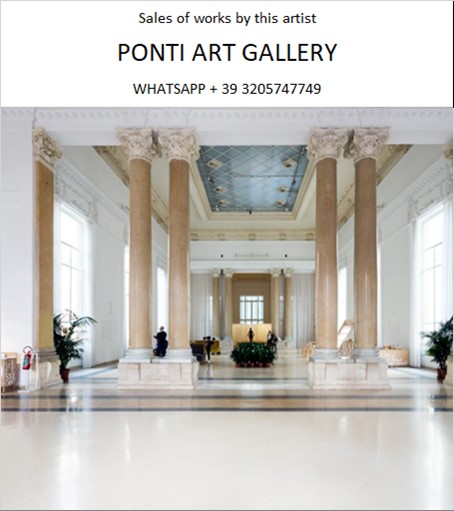Ponti Art Gallery is interested in buying and selling works
of art by this artist.

William-James Glackens Biography
William James Glackens, born on March 13, 1870, in Philadelphia, Pennsylvania, emerged as a pivotal figure in the transition of American art from the academic traditions of the 19th century to the vibrant, realist approaches of the 20th century. His journey from a newspaper illustrator to a leading proponent of the Ashcan School and an influential modernist painter reflects the dynamic changes in American society and art during his lifetime.
Glackens' early life in Philadelphia, a city with a rich visual and educational tradition, significantly shaped his artistic development. He was the youngest of three children to Samuel Glackens, a cashier for the Pennsylvania Railroad, and Elizabeth Glackens. His brother, Louis Glackens, would also pursue a career in the arts as a cartoonist and illustrator. William's artistic talents were evident from his school days, and after graduating from Central High School in 1890, he further honed his skills at the Pennsylvania Academy of the Fine Arts. Here, he was exposed to the teachings of Thomas Eakins and formed friendships with fellow artists who would later become central figures in the Ashcan School, including John Sloan.
Glackens began his career as an artist-reporter, first for The Philadelphia Record and then for the Philadelphia Press. This job required him to capture the bustling life of the city with quick, accurate sketches, a skill that would greatly influence his later work. His assignments as an illustrator took him to Cuba to cover the Spanish-American War for McClure's Magazine, where he depicted the harsh realities of war, a stark contrast to the romanticized versions expected by his employers.
In 1895, Glackens traveled to Europe, where he was profoundly influenced by the modern art movements burgeoning in Paris. This experience broadened his artistic vision and introduced him to the works of the Impressionists and Post-Impressionists, whose emphasis on light and color over form would later permeate his own paintings. Upon his return to the United States, Glackens settled in New York City, where he continued his work as an illustrator while increasingly focusing on painting.
Glackens' association with Robert Henri, a leading figure among progressive American artists, was instrumental in the formation of the Ashcan School. This group of artists, including Glackens, Sloan, George Luks, and Everett Shinn, sought to depict the realities of urban life in New York with an unvarnished truthfulness. Their focus on everyday scenes, from crowded streets to intimate domestic interiors, marked a departure from the idealized subjects favored by the academic establishment.
One of Glackens' most significant contributions to American art was his role in organizing the 1913 Armory Show, which introduced the American public to European avant-garde art. This landmark exhibition was a turning point for American art, signaling a shift towards modernism and influencing generations of artists.
Throughout his career, Glackens continued to evolve as an artist. While his early works were characterized by dark tones and a focus on the gritty aspects of urban life, his later paintings became increasingly vibrant and impressionistic, reflecting the influence of Pierre-Auguste Renoir. Despite this stylistic evolution, Glackens never abandoned his realist roots, and his paintings remained grounded in his keen observations of American life.
Glackens enjoyed a successful career, receiving numerous accolades and exhibiting widely. He was a founding member of the Society of Independent Artists and served as its president, advocating for broader exhibition opportunities for artists outside the mainstream. His works are held in major museums across the United States, including the Metropolitan Museum of Art, the National Gallery of Art, and the Art Institute of Chicago.
William James Glackens passed away on May 22, 1938, in Westport, Connecticut, leaving behind a legacy that bridged the gap between traditional and modern art in America. His body of work not only provides a vivid snapshot of early 20th-century American life but also reflects the transformative power of art to capture the spirit of an era.
William-James Glackens Quotes
and Sales of Works
Ponti Art Gallery selects and deals with paintings by the
artist. Upon request, we provide free estimates and
evaluations, communicate prices, quotations, and current
market values.
If you are interested in BUYING or SELLING works by the
artist, contact us immediately.
If you wish to sell or receive an evaluation of the
works:
Send us a frontal photo of the painting, one of the back,
and one of the signature. Also, indicate the dimensions of
the work. Inform us about the purchase origin of the work
and any kind of available documentation (purchase
receipts, certificates of authenticity, publications). One
of our operators will respond to you on the same day. We
guarantee maximum confidentiality and extreme
professionalism.
If you wish to purchase works by the painter: Contact us
and let us know your request. We will inform you about the
available works. We also offer the possibility to
subscribe to our NEWSLETTER, through which you will be
informed at the beginning of each month about the latest
acquisitions of the art gallery.
You can send us pictures of the work:
